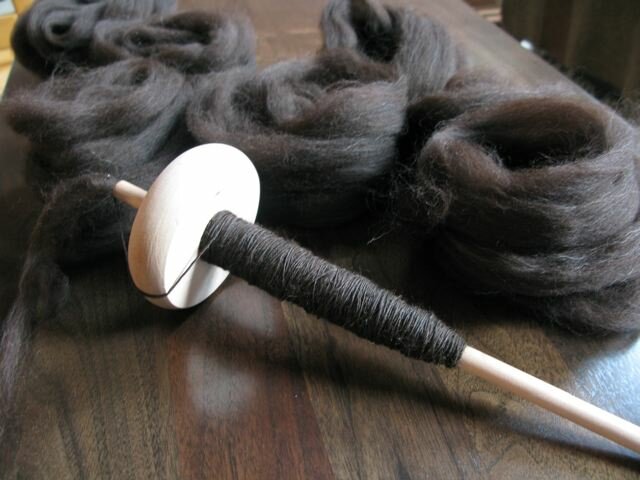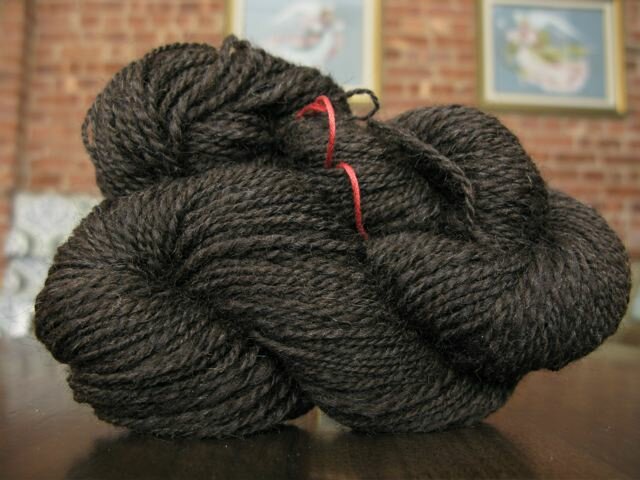January 4, 2010
New Year, New Bags
On new years day, with my crafty project list dwindling post-Christmas, I thought I might try to sew up a knitting needle case. My circular needle collection, now complete to the point where I rarely have to buy new ones, lived in a cluttered box. All the needles, still in their little ziploc-bag-style packaging, were sorted by size, and shared space with crochet hooks and an out-of-favor boye interchangeable set. Getting a new needle out, while not difficult per se, was akin to digging in the back of a closet.
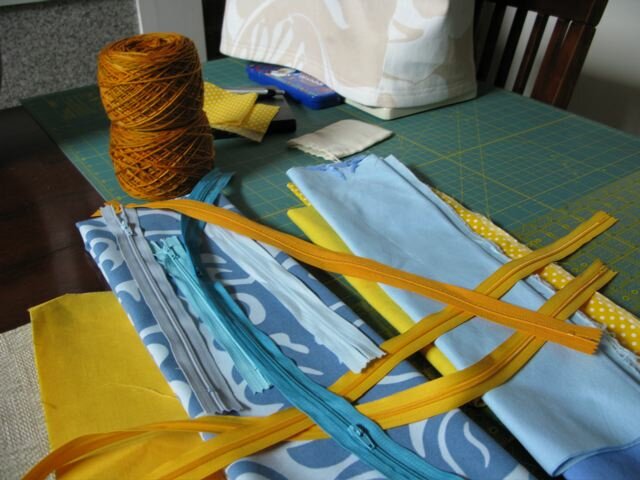
It turned out I had enough fabric on hand to make a whole gamut of new storage vessels for knitting things. Why just have a circular needle holder when there could also be a case for crochet hooks, douple-pointed needles, notions, and of course, projects in progress? Matching of course. I love matching. When there is a choice between matching and not, matching is the way to go.
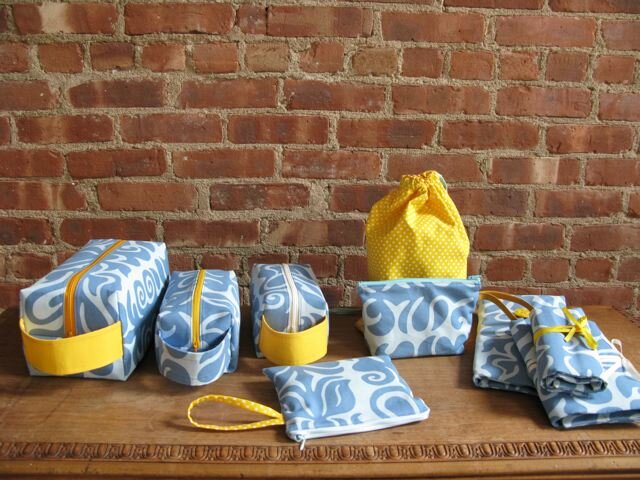
The main fabric is this blue print from Ikea, a single yard originally purchased as a contender for the wedding photo booth backdrop. Ikea has a decent fabric selection, if on the bold and bright side, and upholstery-weight prints like this one go for only $5/yard. I paired it with some solids in various yardages - blues to blend in, and yellows for contrast. I also had a decent selection of yellow zippers and some yellow buttons. All in all, didn't have to leave the house for supplies. Always a plus when its freezing cold out.
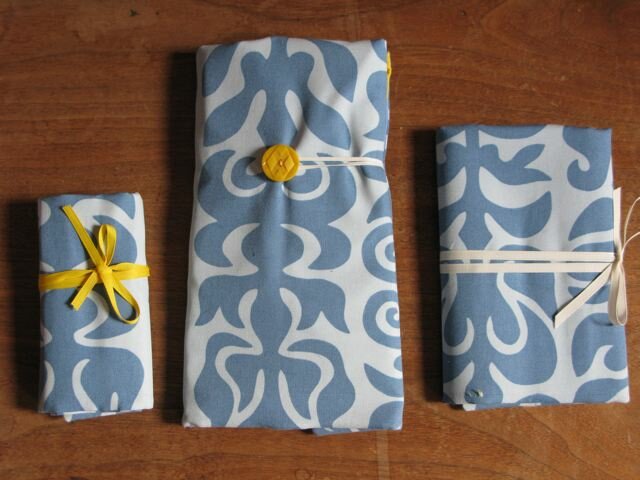
the three needle cases
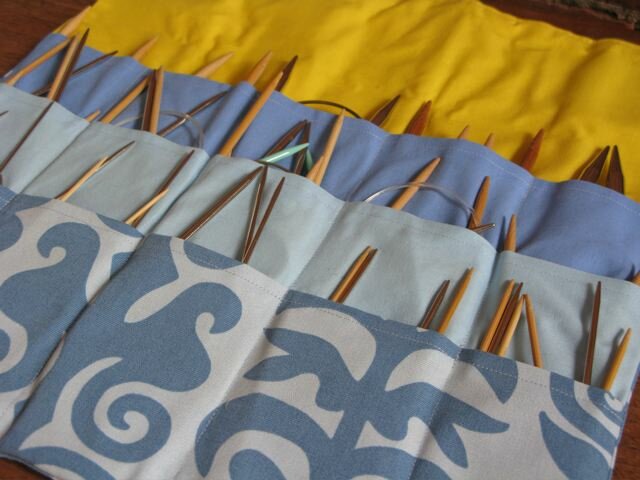
circular needle case
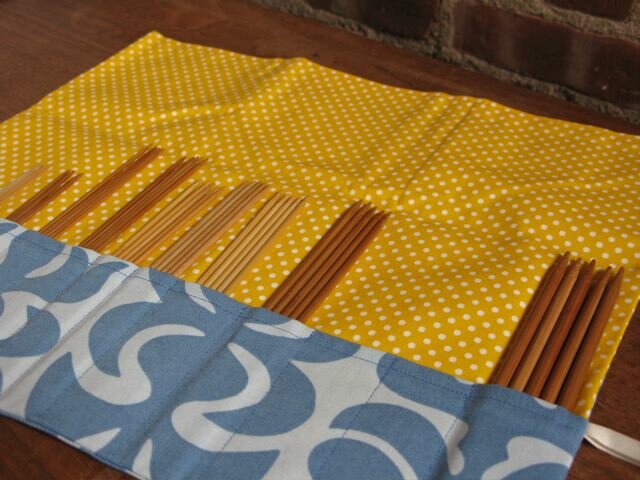
dpn case
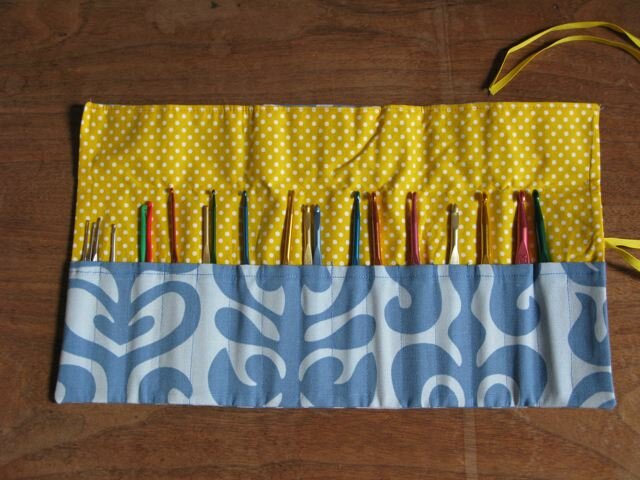
crochet hook roll
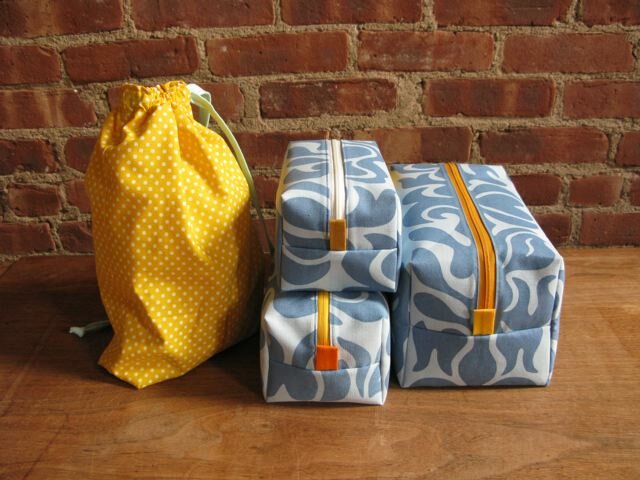
box bags, large and small, and a drawstring pouch
They are quite a beachy group. Its quite possible I'll get tired of seeing the same print all around, but for now I like the idea of visual consistency. Instead of the mismatched red, navy, brown and yellow bags I use now, they all share this blue and yellow beachy theme.. hello 2010.


